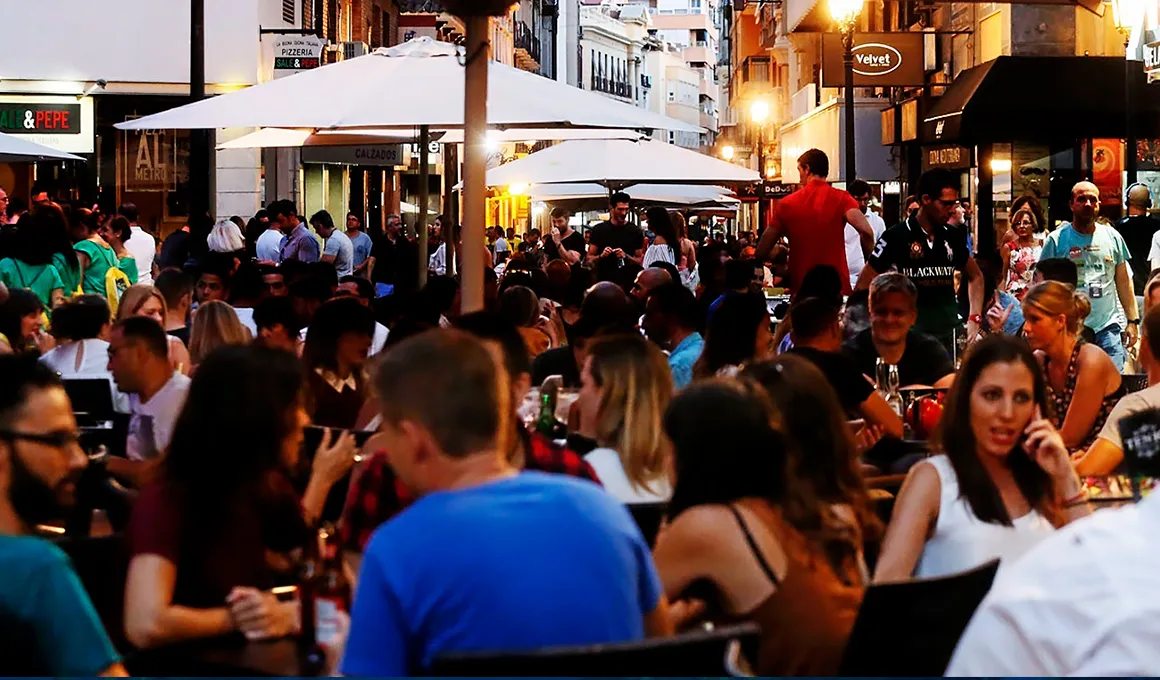Alicante Central Market: Tradition and Gourmet Atmosphere
For enthusiasts of good gastronomy, especially Mediterranean-based, visiting Alicante Central Market is an opportunity not to be missed. A truly popular market filled with fresh and processed products, spread over two floors in a beautiful early 20th-century building, located at the end of La Rambla in Alicante.
At their stalls, the best fruits from Levante’s gardens, from the Mediterranean coast, and many other products from distant countries are displayed (and sold), with common denominators like quality and variety.
Whether you consider yourself a great food enthusiast or not, it is worth strolling, even just out of curiosity, among the hundreds of stalls at Alicante Central Market to observe and enjoy the fantastic daily atmosphere.

The History of Alicante Central Market
Alicante Central Market is undoubtedly the city’s main market. Nowhere else in this beautiful city can you find such a quantity and variety of products, presented in the most diverse and attractive ways.
Moreover, aside from the wholesale markets, it is also difficult to find elsewhere items that are as fresh and of as high quality as those sold at the various stalls in Alicante Central Market. In fact, these are the main identity markers for this market, which began its journey in the early 20th century.
Alicante Central Market is the heir to two other markets that existed in the late 19th century (Puerta del Mar and García Calamarte), which were significantly smaller. These markets were also very unhealthy, leading local authorities to decide to build a new sales center that complied with the existing hygiene regulations.
For the construction of the new Alicante Central Market, parts of the land previously used by the 17th-century walls, which were rebuilt to defend the city against attacks of any kind and often caused shock to the city’s inhabitants, were utilized.
Architects Juan Vidal Ramos and Francisco Fajardo Guardiola were responsible for the project and construction. Both designed a rectangular building with large main corridors and high ceilings, in the style of other markets from the same period, such as Valencia’s Central Market or Barcelona’s La Boquería.
Typical Alicante Products at an Eclectic Market
The construction of this supply market balances between modernism and eclecticism. It was partially built with brick and a multi-sloped roofing, spread over two floors with large glass windows under the roof, creating a pleasant effect of natural light.
One of the most significant parts of Alicante Central Market is the so-called Rotonda, which occupies one side of the main facade and is covered by a striking semi-spherical roof. The market, covering nearly 11,000 square meters, houses close to 300 stalls (trading posts). Most of them are dedicated to selling fruits and vegetables, fish and seafood (occupying the lower part), meat and charcuterie, poultry, and eggs (occupying the upper part).
Additionally, there are stalls with salami, pickles… Many of these areas have been renovated in recent years with changes to both layout and appearance to adapt to new times and attract a new, younger, and more demanding audience.
In this context, specialized stalls have also emerged, offering other types of ingredients like oils, coffees, wines, and all kinds of gourmet products. Some of the traditional stalls have been replaced by bars and small restaurants, ideal for the so-called “tardeo” (aperitif).
That is to say, more and more local residents and visitors to the city are entering Alicante Central Market not with the intention of making their daily purchases but to enjoy an aperitif around noon or after work.
In this regard, it is an excellent place to meet friends and family over a beer, a glass of wine, or a vermouth and enjoy some of the best products from Mediterranean-based cuisine directly on-site.

Stalls at Alicante Central Market
The variety of products at Alicante Central Market makes it difficult to choose stalls, bars, or restaurants without risking leaving out some of the essentials. Nevertheless, here are some of the best suggestions, both for purchasing and dining at the market itself:
- Cafetería Anamar: A great place for a light snack; however, quite filling. For example, their sandwich with scrambled eggs, York ham, and cheese.
- Bar-Cervecería Gravina 4 (C/ Gravina, 4): 30 years of tradition support this classic in Santa Cruz District.
- La Barrita de Santa María (Plaza de Sta. María, 2): Well-crafted tapas right in front of the entrance to Santa María Basilica.
- La Taberna Ibérica (C/ Pedro Sebastià, 7): A wide selection of tapas, including sausages, aged cheeses, rice dishes, and meats.
- San Telmo Gastrobar (C/ San Nicolás, 14): Mediterranean cuisine with flavors from the earth and a varied wine selection.
- Sotaterra by TheLoft (C/ Lonja de los Caballeros, 10): Alicante and Spanish cuisine with wines and handmade products.
- La Tasca del Barrio (C/ Labradores, 22): Mediterranean cuisine, tapas, and rice dishes in a cozy atmosphere.
- Las Brasas de San Miguel (C/ San José, 5): Specialties in grilled meats and typical Alicante flavors.
- Miku Izakaya (C/ Argensola, 7): Sushi and fusion flavors from Asian cuisine.
- Suan Thai (C/ Miguel Soler, 6): Authentic Thai cuisine of high quality.
- Charlie’s American Diner (C/ San José, 8): Classic American burgers in a fun local with 1950s decor.
- In Bocca Al Lupo (C/ Muñoz, 5): Fresh products, handmade pasta, pizzas from the wood-fired oven, and Italian desserts.
